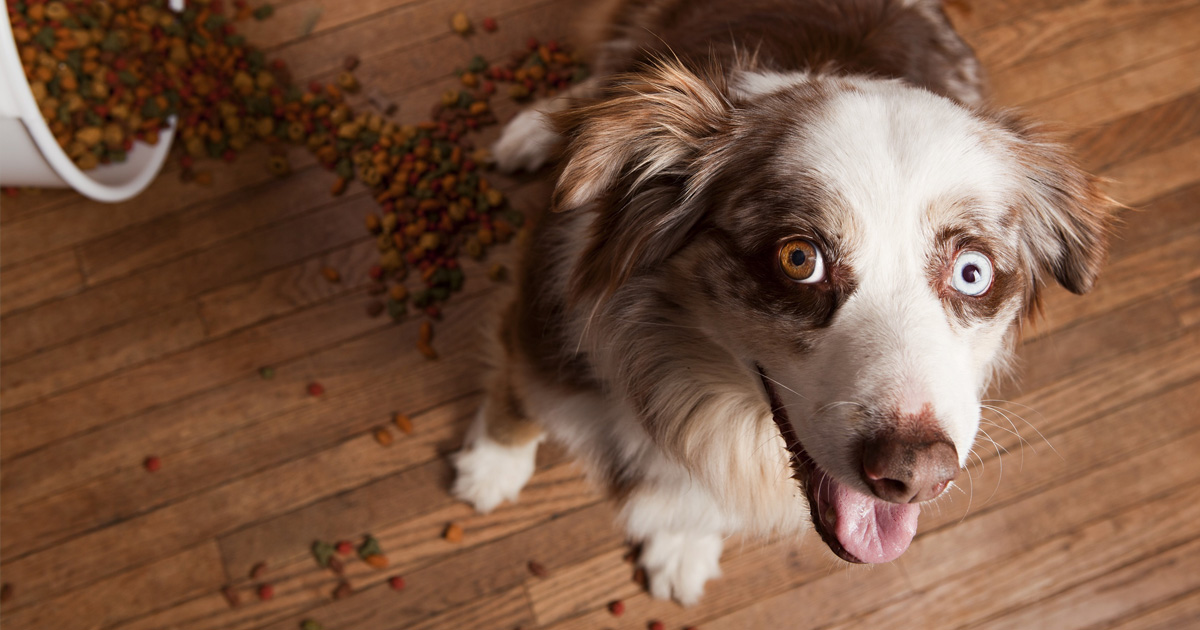Should My Dog Have a Grain-free Diet?

Will that bowl of rice based kibble fuel the greatest dog park adventure ever, or lead to something less fun like ‘leaky gut syndrome’. Is corn best enjoyed popped with butter in front of the big screen, while an all meat diet is more suited for Buster? While large dog food companies may have lost the trust of many dog owners, the clever marketing touting new grain-free dog food doesn’t always present the whole story. When you strip away the hype around the grain-free fad, and consider your dog’s biology and nutrition requirements, choosing the right diet isn’t so complicated.
Can a dog’s digestive system process grains?
Also called cereals, grains are seeds of grass type plants that are cultivated as food crops, and the most common are wheat, rice, oats, corn, barley, millet, oatmeal, and quinoa. Some make the case that because the digestive system of the wolf is not designed to process grain, that the beagle that sits in your lap, baying at the occasional siren, can’t either. They might technically be related, but, like you and your cousin Ricky that has a mullet and served time for grand theft auto, they are not the same. Besides the fact that your dog can shake and roll over, there are ten key genes unique to the modern canine that allow him to digest starch and fat better than the ancient wolf. In fact, it’s believed that canine domestication began thousands of years ago, when early dogs fed on the discarded grain crops of early farm communities.
Do all grains have the same nutritional value?
No. While all grains will provide your dog with energy in the form of carbohydrates, some grains, like quinoa are higher in protein, while others, like corn, are higher in antioxidants. Ultimately, the nutritional value of a grain depends on whether or not it has been processed. When the entire grain seed is used, more of the nutrients remain intact, and the product can be labeled ‘whole grain’. Processed grains lose some nutrients, and are often labeled as ‘refined grain food’. Fortunately, everyone knows whole grains are better for you. Even your dog knows that.
Should my dog should have grain-based food?
The majority of dogs get excellent nutrition from foods that contain grain, and they also get the added benefit of high fiber content. There’s no shame in taking an extra baggie on that morning walk after a hearty breakfast of rice based kibble, and she’ll certainly feel lighter on her feet. Instead of focusing on the presence of a grain, consider how balanced the dog food is. Until you worked in those leafy greens and organic grains, your old lopsided diet of Trader Joes frozen pizzas didn’t impress anyone at your annual check-up. Remember that it’s just as important for your dog’s diet to be well balanced. Look for the Association of American Feed Control Official (AAFCO) seal on pet food packaging, and you can feel good that the feed is nutritionally balanced and complete. Skip the ones with ingredient lists that read like a science experiment, and look for a quality food with a single meat source and a few other recognizable ingredients. That way, if there are any allergic reactions, they can be traced more easily.
How do I know if my dog is allergic to grains?
While it is impossible for a dog to be allergic to all grains, some dogs do show signs of food allergies or dietary intolerance to a specific grain. Pets with food allergies will often rub their face and ears, or lick their paws. If Ace does back flips when you put a bowl of quinoa based kibble down, you should be in good shape though. Dogs with intestinal dietary intolerance have difficulty processing the ingredients in their food. Frequent bowel movements or diarrhea is a telltale sign that your dog is intolerant to an ingredient in his food. Or that you went a little overboard on those half price pints of IPA on trivia night.